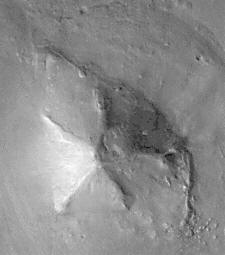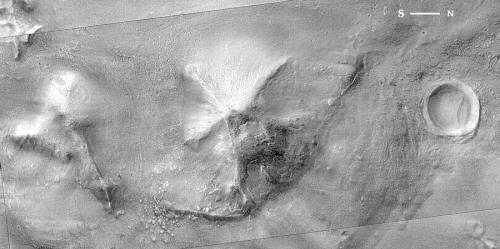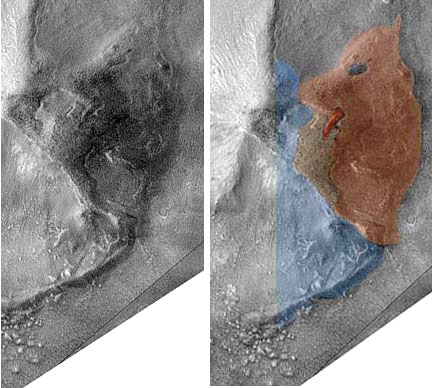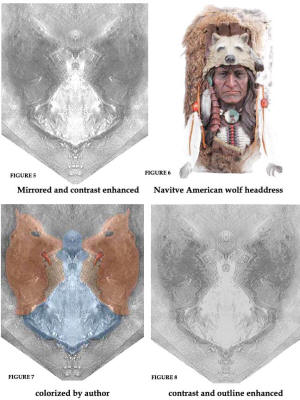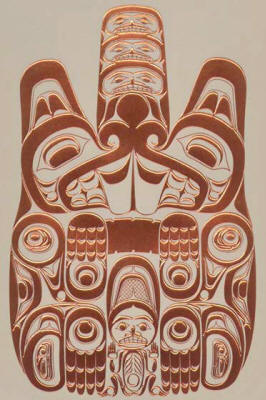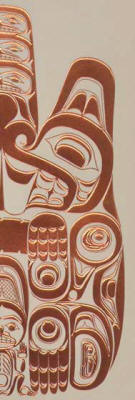|
Study 1:
Themis image of D&M Pyramid
(east side)
I also believe that the mathematical model described by Richard Hoagland, Erol Torun and others is valid.1 From much study of the Cydonia structures, we have determined that there are multiple images within these structures which reveal themselves depending upon the viewing perspective, the viewing distance and possibly the angle of sunlight - in the same manner as the shadow serpent which appears at the Equinox on the Maya pyramid at Chichen Itza, Mexico.
Figure 1: D&M
pyramid, 1976 Viking Orbiter Figure 2 is a Keith Laney enhancement of the “D&M Pyramid” It is a grayscale of a Themis image taken by the Mars Odyssey spacecraft. 2 Figure 2: Themis image of D&M Keith Laney enhancement
After a long search I finally found another intended image “hidden from the searcher and thinker.” 3 Its meaning however, eludes me. This work of art is found on the east side of the structure when the above enhancement is rotated 36 degrees counter-clockwise 4. It conforms to most of Cydonia, in that it is presented in the “Herencia” or “cut in half” motif and expresses itself with a connection to the Americas’ indigenous cultures.
The picture contains two parts; a half image and a profile image. The profile image is of a person wearing what appears to be a wolf headdress. This type of adornment is known to have been worn by Native American Indians. The half image is of a girl or young woman in a beautiful embroidered gown. The entire work is approximately 3 km or 2 miles in size.
Figure 3: Crop of NE portion of D&M Figure 4: Crop of NE portion of D&M colorized
The first adjectives that come to mind for the girl are innocence and humility. For both parties; reverence.
Figure 9 “Haida Beaver” by Bill Reed Figure 10 “cut in half”
There are more amazing works of art
presented to us in this area of the D&M and “Study 2” looks to the
north tip of the platform.
|
